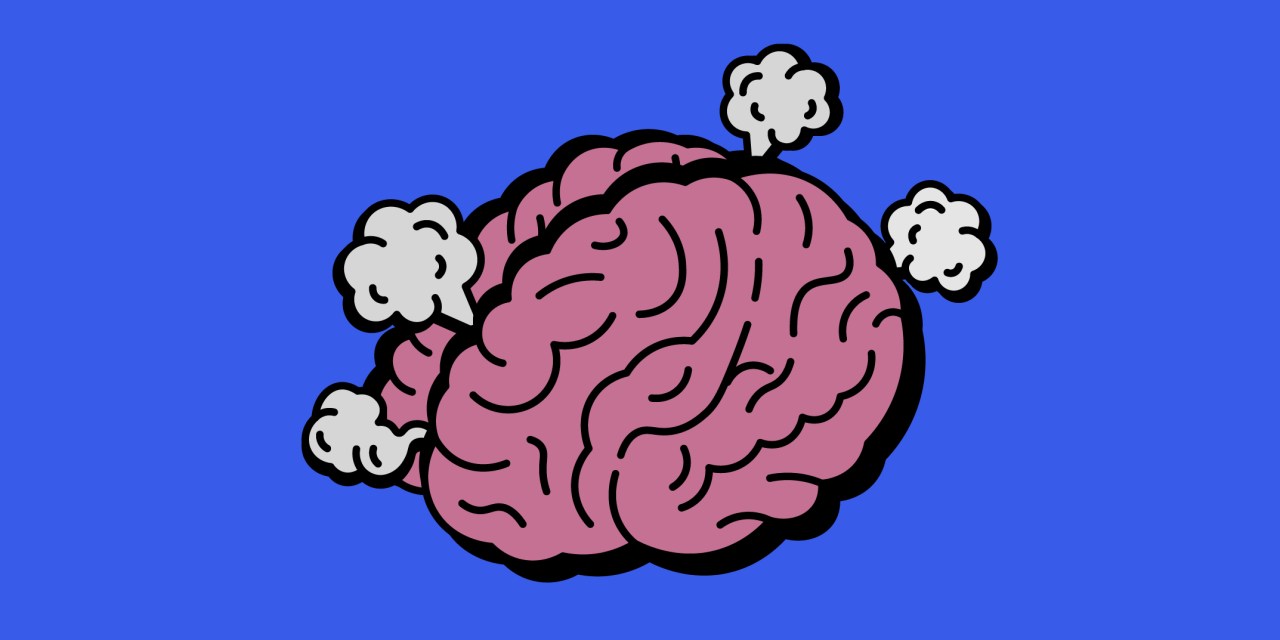How our brainwave patterns are affected by hybrid working

The brain hosts our intelligence and is responsible for how our senses react and how we behave.
During the past two years, it has had to adapt to the unpredictable switch between home and office working and the potential impact on our mental health.
Microsoft has even studied the impact of hybrid working on our brains. It followed the brainwave patterns of two people collaborating in-person and virtually and found that there were more brainwave patterns associated with stress and being overworked when the colleagues were interacting remotely.
When they switched to in-person, their brains had a harder time adapting to the joint task than if they had started and completed the whole job face-to-face.
There is still uncertainty over where we will be working in the future and where we will be the most productive and happy.
Our brains have been working overtime during the pandemic because we have had to engage with tasks for longer. We feel exhausted after hours on Zoom or Teams calls because these virtual meetings demand more sustained attention and require us to be constantly alert and ready to respond.
Working at home might mean more time to spend with our family, but we have lost that commuting time when our brain switched off from work while we watched a movie or listened to music.
When we returned to the office for a few days a week our brains had to adapt again, this time to being sociable in a face-to-face working environment.
Andrew Mawson, founder of global consultancy Advanced Workplace Associates, says our brains are wired in certain ways when it comes to our professional lives, and in a hybrid world employers need to respond accordingly.
This means ensuring internal processes and culture evolve but that the physical office is still a practical place to work.
It can become stressful if people have to fight for one of the limited desks available because their company has decided to downsize.
Mawson says the technology now exists to support neurodiverse employees in the workplace in the form of sensors and mobile booking applications.
If an employee regularly likes to sit next to a window, for example, the technology can retain this information and ensure there is a seat available for them next to a window. This eliminates any concern or stress they may have as to whether a suitable seat is accessible when they visit the office.
This technology can also identify what sort of temperature or humidity an employee prefers to work in. Our brains react when we are too hot or too cold by making us sweat or shiver, and this can distract us from our work. Our brains must also work harder if it is difficult to concentrate because there is too much noise.
“As well as differences around sensitivities to noise, light and temperature, there will be varying levels of ability, disability and lifestyle need,” said Mawson. “Our brain requires much more energy to process new experiences because it works on a prediction loop. If an experience is familiar, the brain can predict the outcome and people fall into their usual patterns of behavior, rather than having to find new approaches.”
And — as with any animal — humans have evolved to avoid unnecessary risk, he added.
“In unfamiliar situations, the brain will want to weigh up all possible approaches to find the best and less risky option,” said Mawson. “Everything takes longer as the brain processes and filters new information. After a long period of living and working with so many unknowns during the pandemic, many employees do not have the energy left to be creative and go the extra mile at work.”
Psychologist Dr. Audrey Tang says some mental health problems have developed over the past two years because people have made their own rules when adapting to working at home. Issues can occur when these rules do not align with those set out by their employer.
“For example, at the beginning of the pandemic managers did not recognize how exhausting it was having back-to-back Zoom meetings. People have decided themselves to build in their own breaks between calls,” she said. “Also, in a corporate office, there are health and safety and ergonomic people around to support employees. Much of this disappeared with home working. Do we know if our current work environment is safe?”
Tang added that for people who do not like working at home and who cannot wait to get back to a physical office a few days a week, the pressure on their brains and mental health can be huge. Being told they have to work from home for an indefinite period has made them anxious.
“Ultimately we need to understand what balance means to different people so they still enjoy their job,” she said.
